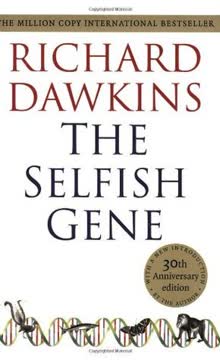Key Takeaways
1. Genes, not individuals, are the fundamental units of natural selection
The genes that exist today tend to be the ones that are good at surviving in that statistical ensemble of bodies, and in company with that statistical ensemble of companion genes.
Genetic replicators are key. Natural selection acts primarily on genes, not individual organisms or groups. Genes are the fundamental units of heredity and evolution, persisting through generations while individual organisms come and go. They compete for representation in future gene pools by influencing the survival and reproduction of the bodies they inhabit.
Genes shape organisms. The phenotypic effects of genes - their influence on an organism's characteristics - are the means by which they ensure their own replication. These effects can be direct (like coding for a protein) or indirect (like influencing behavior). The complexity of organisms arises from the accumulated effects of genes that were successful at replicating themselves over evolutionary time.
Gene-centric view clarifies evolution. Viewing evolution from the perspective of genes rather than individuals helps explain many phenomena that are otherwise puzzling, such as altruism towards relatives, parent-offspring conflict, and the existence of "selfish" genetic elements that spread despite not benefiting the organism as a whole.
2. The extended phenotype: Genes influence the world beyond individual bodies
The replicator should be thought of as having extended phenotypic effects, consisting of all its effects on the world at large, not just its effects on the individual body in which it happens to be sitting.
Phenotypes extend beyond bodies. The influence of genes is not limited to the bodies of the organisms that carry them. Genes can have effects on the environment and on other organisms, which in turn influence their own replication. This concept is called the "extended phenotype."
Examples of extended phenotypes:
- A beaver's dam
- A spider's web
- The manipulation of a host's behavior by a parasite
- The nest of a bird
Implications for understanding adaptation. The extended phenotype concept forces us to reconsider what we mean by adaptation. Instead of asking how an organism's traits benefit itself, we should ask how they benefit the genes that produce them. This perspective can help explain seemingly maladaptive traits that actually serve to propagate the genes responsible for them.
3. Replicators vs. vehicles: A new perspective on evolution
Replicators are not, of course, selected directly, but by proxy; they are judged by their phenotypic effects.
Replicators and vehicles defined. Replicators are entities (like genes) that can make copies of themselves. Vehicles are entities (like organisms) that carry and protect replicators, and whose traits are influenced by them. This distinction helps clarify the different roles played by genes and organisms in evolution.
Selection acts on vehicles, but replicators persist. Natural selection primarily affects the survival and reproduction of vehicles (organisms). However, it's the replicators (genes) within these vehicles that persist through generations and accumulate over evolutionary time. This explains why evolution appears to act on individuals in the short term, but is ultimately driven by gene-level selection.
Implications for levels of selection. The replicator/vehicle distinction helps resolve debates about levels of selection (genes vs. individuals vs. groups). While selection can act at multiple levels, only replicators have the potential for long-term evolutionary change. This perspective supports gene-level selection as the fundamental process in evolution, while acknowledging the importance of higher-level entities like organisms and groups as vehicles.
4. Selfish genes and the illusion of altruism
Any effect that a meme has on the behaviour of a body bearing it may influence that meme's chance of surviving.
Genes promote their own replication. The "selfish gene" concept posits that genes act to promote their own replication, regardless of the consequences for the organism or other genes. This doesn't mean genes are conscious or intentionally selfish, but rather that natural selection favors genes that are good at ensuring their own propagation.
Apparent altruism explained. Many behaviors that appear altruistic can be explained as strategies that ultimately benefit the genes responsible for them. Examples include:
- Kin selection: Helping relatives who share copies of one's genes
- Reciprocal altruism: Cooperating with others who may return the favor
- Parental care: Investing in offspring who carry copies of parental genes
Cultural evolution parallels genetic evolution. The concept of "memes" - units of cultural information that replicate through social learning - provides a parallel to genetic evolution in the cultural realm. Like genes, memes can spread based on their ability to replicate themselves, regardless of their effects on individuals or societies.
5. The arms race of manipulation and counter-manipulation in nature
Any evolutionary adaptation of the host nervous system to resist manipulation by cuckoo nestlings lays itself open to counter-adaptation by the cuckoos.
Evolutionary arms races are common. In nature, adaptations by one species often lead to counter-adaptations by other species they interact with. This results in ongoing evolutionary "arms races" where each side continually evolves to gain an advantage over the other.
Examples of evolutionary arms races:
- Predators and prey evolving better hunting and evasion strategies
- Plants and herbivores developing toxins and detoxification mechanisms
- Parasites and hosts evolving more effective infection and resistance strategies
Manipulation and counter-manipulation. A special case of evolutionary arms races involves manipulation of one organism by another, and the evolution of resistance to such manipulation. Examples include:
- Cuckoos evolving to trick host birds into raising their young
- Parasites manipulating host behavior to aid their transmission
- Plants evolving to attract pollinators while limiting nectar loss
6. Memes: Cultural evolution parallels genetic evolution
A meme should be regarded as a unit of information residing in a brain (Cloak's 'i-culture'). It has a definite structure, realized in whatever physical medium the brain uses for storing information.
Memes as cultural replicators. Memes are units of cultural information that replicate through social learning, analogous to genes in biological evolution. They can be ideas, behaviors, styles, or any other culturally transmitted information.
Characteristics of memes:
- Variation: Memes come in different forms
- Heredity: Memes are passed from person to person
- Selection: Some memes spread more successfully than others
Implications of memetic evolution. The concept of memes suggests that cultural evolution follows similar principles to genetic evolution. This can help explain:
- The spread of ideas and behaviors in societies
- The persistence of seemingly irrational beliefs or practices
- The emergence of complex cultural adaptations without conscious design
7. The concept of fitness is complex and often misunderstood
Fitness is just a way of talking about the survival of replicators, in this case genetic replicators.
Multiple definitions of fitness. The term "fitness" has been used in several ways in evolutionary biology, leading to confusion:
- Everyday usage: Physical health or capability
- Population genetics: Relative reproductive success of genotypes
- Classical fitness: Reproductive success of individuals
- Inclusive fitness: Effect on the reproduction of related individuals
- Personal fitness: Combination of direct and indirect fitness effects
Fitness is relative, not absolute. Fitness should be understood as a comparative measure of reproductive success, not an absolute quality. A gene or trait is "fit" only in comparison to alternative genes or traits in a specific environment.
Avoiding fitness-based thinking. Due to the complexity and potential for misunderstanding, some biologists argue for avoiding the concept of fitness altogether when possible. Instead, focusing directly on gene frequencies and their changes over time can provide a clearer understanding of evolutionary processes.
8. Animal artifacts as extensions of genetic influence
Once we have accepted that there are genes for building behaviour, the rules of existing terminology imply that the artefact itself should be treated as part of the phenotypic expression of genes in the animal.
Artifacts as extended phenotypes. Animal-built structures, such as beaver dams or bird nests, can be considered extensions of the animals' phenotypes. The genes that influence the building behavior are, in effect, genes "for" the resulting artifact.
Examples of animal artifacts:
- Caddisfly larva cases
- Termite mounds
- Spider webs
- Bowerbird bowers
Implications for understanding adaptation. Viewing artifacts as extended phenotypes helps us understand how natural selection can act on traits that exist outside the animal's body. It also highlights the importance of considering the entire range of a gene's effects, not just those within the organism's physical boundaries.
9. The limitations of group selection theory
It is as if we had to do with a parliament of genes: each acts in its own self-interest, but if its acts hurt the others, they will combine together to suppress it.
Group selection is limited. While selection can act at the level of groups, it is generally weaker than selection at the level of individuals or genes. This is because:
- Groups reproduce and die less frequently than individuals
- Migration between groups dilutes group-level adaptations
- Individual-level selection often opposes group-level selection
Alternatives to group selection. Many phenomena once explained by group selection can be better understood through:
- Kin selection: Helping relatives who share genes
- Reciprocal altruism: Cooperating for mutual benefit
- Selfish gene theory: Genes promoting their own replication
Implications for understanding cooperation. While group selection is not entirely ruled out, most cases of apparent group-level adaptation can be explained by lower-level selection processes. This perspective helps explain why genuine altruism towards unrelated individuals is rare in nature.
10. Lamarckism revisited: The case of Steele's theory
If Steele proves right, we should hear no triumphant chuckles from the shade of Bernard Shaw!
Lamarckian inheritance revisited. Edward Steele proposed a mechanism by which acquired characteristics might be inherited, seemingly challenging the central dogma of molecular biology. However, closer examination reveals that Steele's theory is actually compatible with Darwinian evolution.
Key points of Steele's theory:
- Somatic mutations in immune cells could be transferred to germ cells
- This transfer would be mediated by retroviruses
- The process would allow for the inheritance of acquired immunity
Implications for evolutionary theory. Even if Steele's theory were proven correct, it would not fundamentally challenge Darwinian evolution. The process would still involve selection among randomly generated variants, not the direct inheritance of acquired characteristics as envisioned by Lamarck. This case illustrates the importance of carefully examining apparent challenges to established evolutionary theory.
Last updated:
FAQ
What's The Extended Phenotype by Richard Dawkins about?
- Gene-Centered Evolution: The book explores the gene-centered view of evolution, emphasizing how genes extend their influence beyond the individual organism.
- Extended Phenotype Concept: Dawkins introduces the idea that genes can affect the environment and other organisms, not just the individual body.
- Gene Selection Advocacy: It argues for prioritizing the gene as the primary unit of selection, challenging traditional views focused on individual organisms or species.
Why should I read The Extended Phenotype by Richard Dawkins?
- Unique Evolutionary Perspective: The book offers a fresh lens on evolutionary biology, encouraging readers to reconsider adaptations and the role of genes.
- Accessible Writing: Dawkins is known for his engaging prose, making complex scientific concepts accessible to a broad audience.
- Influential Ideas: The concepts have significantly influenced ethology, ecology, and evolutionary biology, making it foundational for understanding modern evolutionary theory.
What are the key takeaways of The Extended Phenotype by Richard Dawkins?
- Gene as Selection Unit: Dawkins posits that genes are the primary agents of evolution, with adaptations as strategies for gene survival.
- Extended Gene Effects: The book emphasizes that genes can influence the environment and ecosystems, referred to as the "extended phenotype."
- Critique of Group Selection: Dawkins challenges group selection, arguing that natural selection acts at the level of the individual and the gene.
What is the concept of the "extended phenotype" in The Extended Phenotype by Richard Dawkins?
- Definition: The extended phenotype includes all effects a gene has on the environment, influencing survival beyond the individual.
- Examples: Dawkins cites nests built by birds and parasite manipulation of hosts as examples of genes affecting the world beyond the organism.
- Evolutionary Implications: This concept suggests that a gene's success includes its impact on the broader ecological context.
How does Richard Dawkins define "replicators" in The Extended Phenotype?
- Replicators Defined: Replicators are entities that can make copies of themselves, with genes as the primary example in biology.
- Active vs. Passive: Active replicators influence their survival through phenotypic effects, unlike passive ones.
- Germ-Line Importance: Active germ-line replicators (genes) are crucial for understanding natural selection, as they persist through generations.
What is the "life/dinner principle" in The Extended Phenotype by Richard Dawkins?
- Principle Definition: It posits that stakes in an evolutionary arms race are asymmetrical; prey has more to lose than predators.
- Evolutionary Strategy: Prey species evolve stronger defenses compared to predator adaptations due to higher survival stakes.
- Natural Example: This principle explains why prey animals prioritize survival, leading to evolutionary advantages in avoiding predation.
How does Richard Dawkins differentiate between "vehicles" and "replicators" in The Extended Phenotype?
- Vehicles Defined: Vehicles are organisms that carry replicators (genes) and provide an environment for their survival.
- Role of Replicators: Replicators are genetic entities subject to natural selection, influencing vehicle traits and behaviors.
- Natural Selection Implications: This distinction highlights that while organisms exhibit adaptations, the driving force is replicator survival.
What are "outlaw genes" and how do they function in The Extended Phenotype by Richard Dawkins?
- Outlaw Genes Defined: These genes benefit themselves at the expense of the organism or other genes.
- Types of Outlaws: Allelic outlaws have positive effects at their locus but are suppressed by other loci modifiers.
- Evolutionary Impact: Outlaw genes create genome conflicts, leading to selection pressures for suppressive modifier genes.
How does The Extended Phenotype by Richard Dawkins address the concept of "kin selection"?
- Kin Selection Overview: It suggests individuals increase genetic success by helping relatives, ensuring shared gene survival.
- Inclusive Fitness: Dawkins emphasizes considering both individual and relative reproductive success for understanding altruism.
- Critique of Individual Focus: The book argues kin selection highlights genetic relationships' importance, encouraging deeper exploration of gene-influenced behavior.
What role do animal artifacts play in the extended phenotype in The Extended Phenotype by Richard Dawkins?
- Animal Artifacts Defined: Structures like nests or dams created by animals serve specific functions and are phenotype extensions.
- Examples: Beaver dams and spider webs illustrate how structures enhance survival and reflect genetic influence.
- Evolutionary Understanding: Considering artifacts as part of the extended phenotype broadens the view of evolution, including gene effects on the environment.
How does The Extended Phenotype by Richard Dawkins challenge traditional views of evolution?
- Gene Focus Over Individuals: Dawkins argues evolution should be understood in terms of genes, not individual organisms.
- Critique of Individual Selection: The book highlights conflicts from outlaw genes, encouraging a nuanced understanding of genetic interactions.
- Broader Biological Implications: Expanding phenotype concepts to include environmental effects challenges traditional adaptation and survival views.
What are the best quotes from The Extended Phenotype by Richard Dawkins and what do they mean?
- "The phenotypic effects of a gene are the tools by which it levers itself into the next generation.": Emphasizes genes' influence beyond the organism for survival.
- "It is legitimate to speak of adaptations as being ‘for the benefit of’ something, but that something is best not seen as the individual organism.": Challenges adaptation views, arguing genes are the true beneficiaries.
- "Natural selection is the process by which replicators change in frequency in the population relative to their alleles.": Defines natural selection, highlighting replicator and allele dynamics in evolution.
Review Summary
The Extended Phenotype by Richard Dawkins is a challenging but rewarding read that expands on concepts from The Selfish Gene. It explores how genes influence not just an organism's body, but also its behavior and environment. Many readers found it intellectually stimulating, praising Dawkins' clear writing and revolutionary ideas. However, some struggled with its technical nature and dense scientific content. The book is considered Dawkins' most significant contribution to evolutionary biology, offering a gene-centric view of evolution that challenges traditional perspectives.
Similar Books
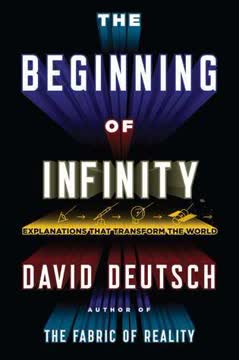
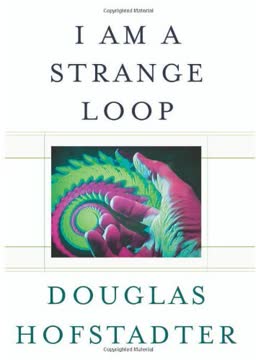




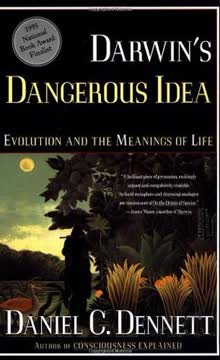
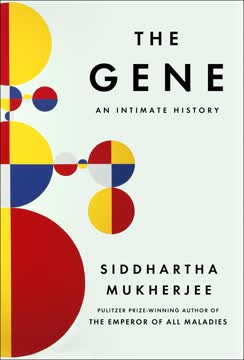
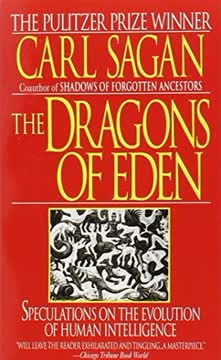

Download PDF
Download EPUB
.epub digital book format is ideal for reading ebooks on phones, tablets, and e-readers.


